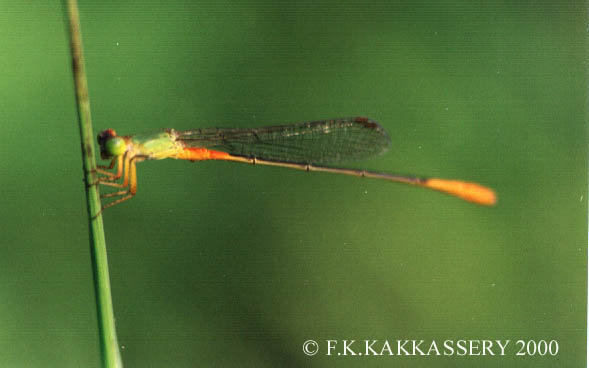 |
This damselfly is Ceriagrion cerinorubellum male, common
in this region, and found in very good number dominated by males. The
reproductive behaviour is very interesting and fascinating. As usual,
the males are brightly coloured, orange at the anterior
end and the tip of the abdomen. |
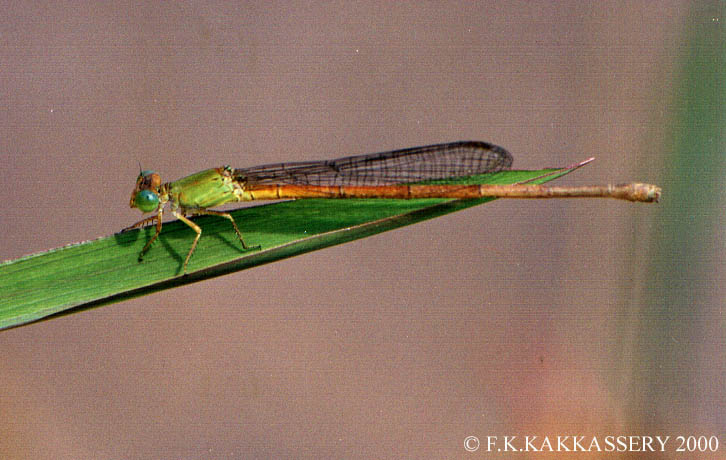 |
This is the female of
Ceriagrion cerinorubellum . They are seen everywhere, but aggregate near
the pond at the time of reproduction. The males come very early
in the morning and perch on the tip of the vegetation waiting
for the
females. The females come one hour after the sun rise. |
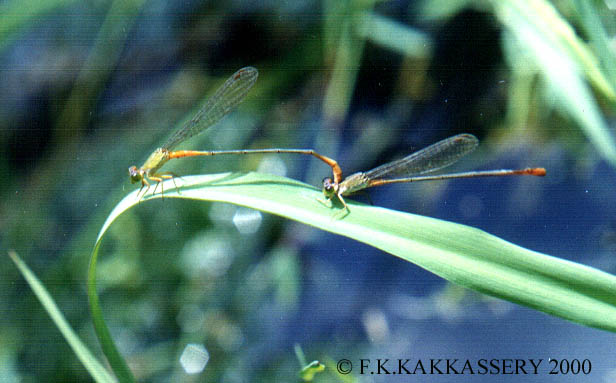 |
The first step of the
reproductive behaviour, as seen in all Odonates, the male catches
the female and assumes the Tandem position.
This will also be shown after the wheel formation . |
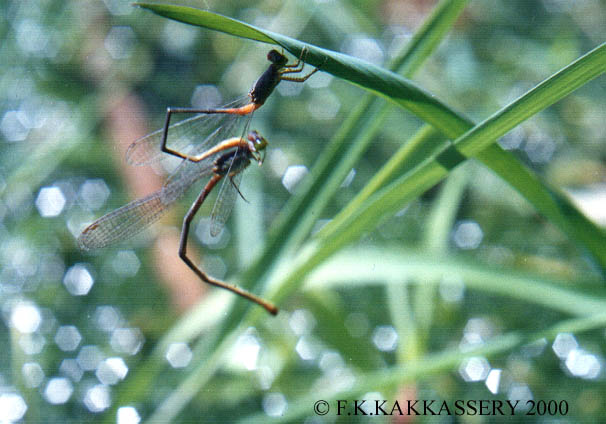 |
The next step is Sperm translocation. It occurs in the male
immediately after the tandem. This is the transfer
of the sperm from 9th abdominal segment to the penis which is located at
the 2nd abdominal segment. Here , this is shown in two frames, first and second .
It lasts only two seconds.> Sperm translocation 1 |
 |
Sperm
translocation is the essential process before the wheel
formation. And it is not easy to find this on casual observation
due to very short duration.
> Sperm translocation 2.
|
 |
This is Wheel formation. It is the transfer of the sperm
from the penis of the male to female genitalia by
bending the abdomen of the female towards the 2nd abdominal
segment of the male. This is also shown in two frames, first and
second.> Wheel formation1 |
 |
This
is Wheel formation and Copulation. Wheel formation is followed by
copulation. It is achieved by the rhythemic movement of abdomen of the
female connecting to the 2nd abdominal segment of male. It
lasts for 30 minutes .> Wheel formation 2 |
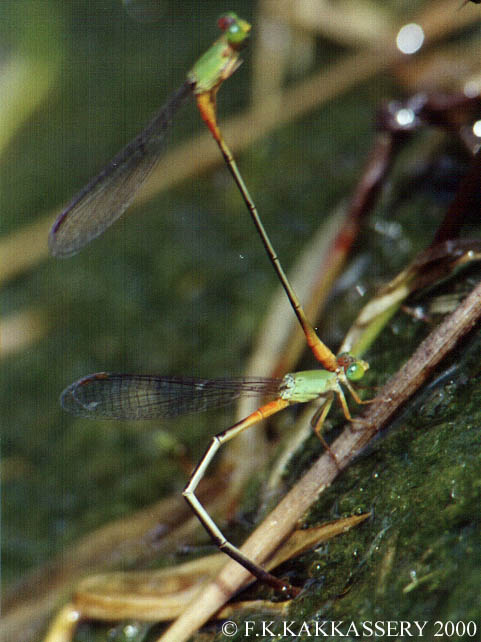 |
This is male guarding Oviposition. After
the copulation the wheel is broken and male is in upright position,
still holding the female by the neck .And it flies to find
suitable places to oviposit, usually just below the water surface
attached to the submerged vegetation. After ensuring the completion of
ovipositon, the male detaches itself and flies away. |